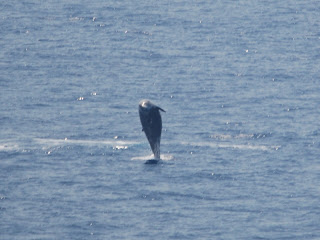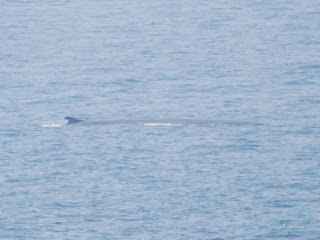Monk Haven is a favourite site, a secluded valley with a Waste water treatment works at its head, an excellent churchyard and garden to the manor, a boggy pool and shingle beach looking out into Milford Haven. It's great for wintering Chiffchaffs and Firecrests and would probably turn up autumn goodies but no-one really looks.
Dave Astins and I visited on the afternoon of the 28th and wandered up to the Water works as a start. We got no further though because the place was leaping with Chiffchaffs including some notably pale birds. I still don't know how many there are - at least 9 collybita and 3 tristis but maybe more it's hard to keep up with them as they are always very active and there's lots of good habitat
It's difficult to distinguish the different individuals as they move about such a lot and they change appearance due to the light conditions and their angle and posture. Martin Garner's post re Siberian Chiffchaffs on 'Birding Frontiers' is a must for any discussion of the different effects on plumage tones, he calls it 'morphing' which is a great description. One of the birds at Monk Haven has very contrasty tertials - broad pale edges and strong dark centres. There are always collybita birds for comparison.
The following features pretty much describe the Monk Haven birds:
- The head, mantle and back are brown-grey (re caveats on 'morphing' plumage tones), sometimes very pale-looking but sometimes 'milky-tea' colour or browner; completely lacking any yellow or green tones.
- The underparts are noticeably pale in all lights again lacking any yellow tones, including in the undertail coverts.
- The supercilium is strong, distinct and whitish, tinged with buff-rust, particularly from the eye to the rear. Whitest at the lores.
- The ear-coverts are warmer tinged, a 'tobacco-stain' colour, weaker or stronger depending on posture.
- There is a thin clear white fairly complete eye-ring.
- There is sometimes some yellow-green tones apparent in the flight feathers and at the bend of the wing.
- The great coverts are tipped paler, giving a faint but, at times, clear wing-bar.
- The bill is black with sometimes a pale reflective effect on the mandible edges. There is a paler base (grey) to the lower mandible in at least one individual.
- The legs are blackish with sometimes a paler reflective effect especially at the 'ankle' area which seems to be caused by the edges of the large scales.
 |
| Same bird as photo above, note ear-coverts |
 |
| grey looking at this angle |
 |
| fairly obvious wing-bar |























+9Sep13.jpg)
.jpg)




























